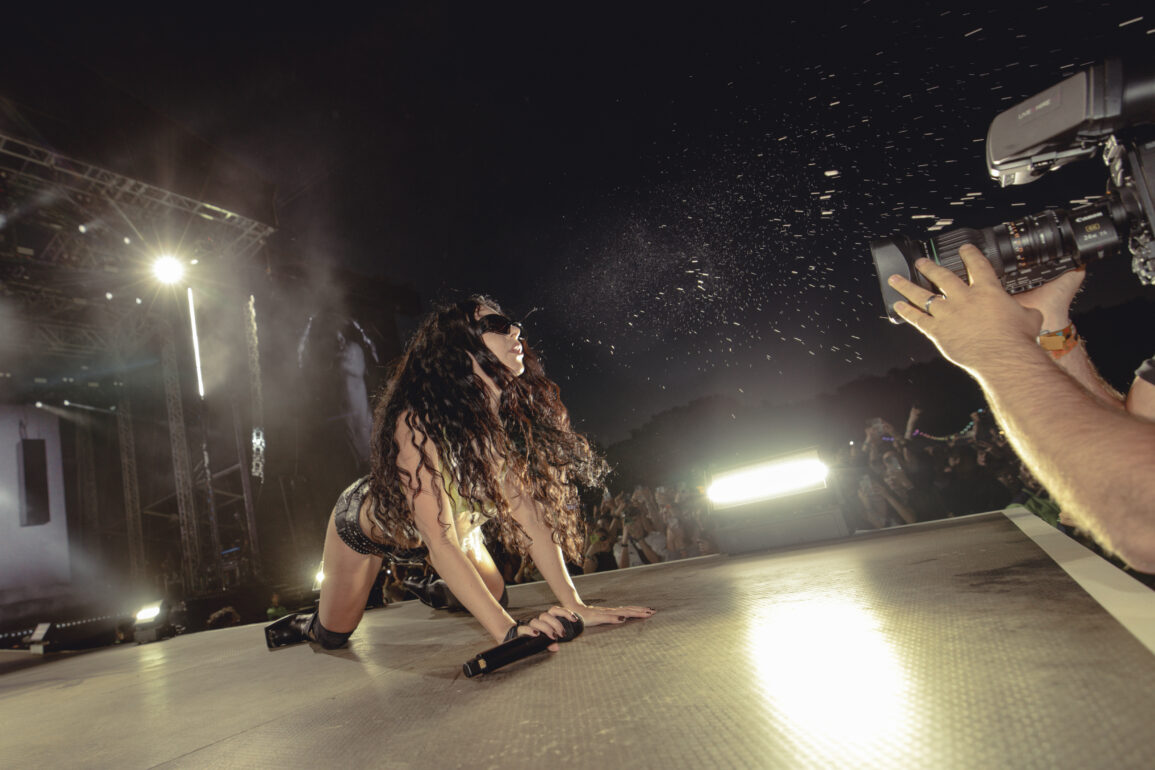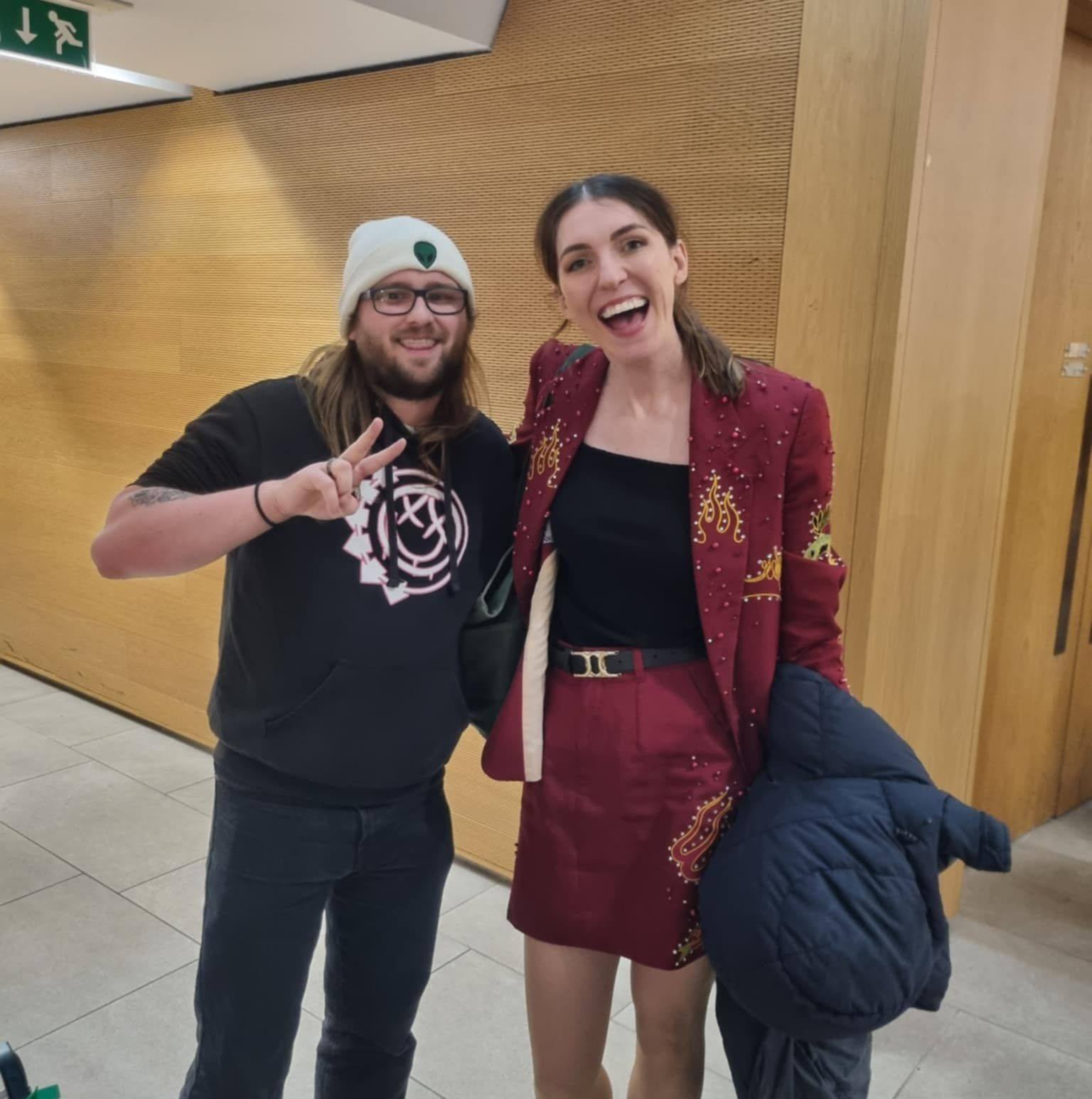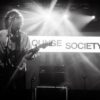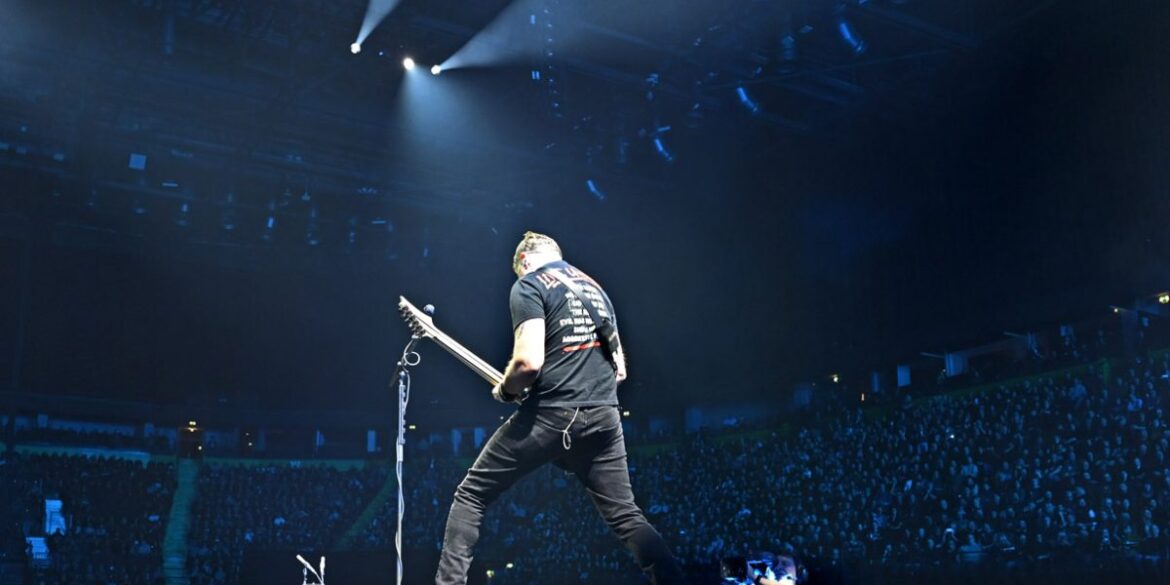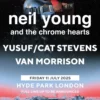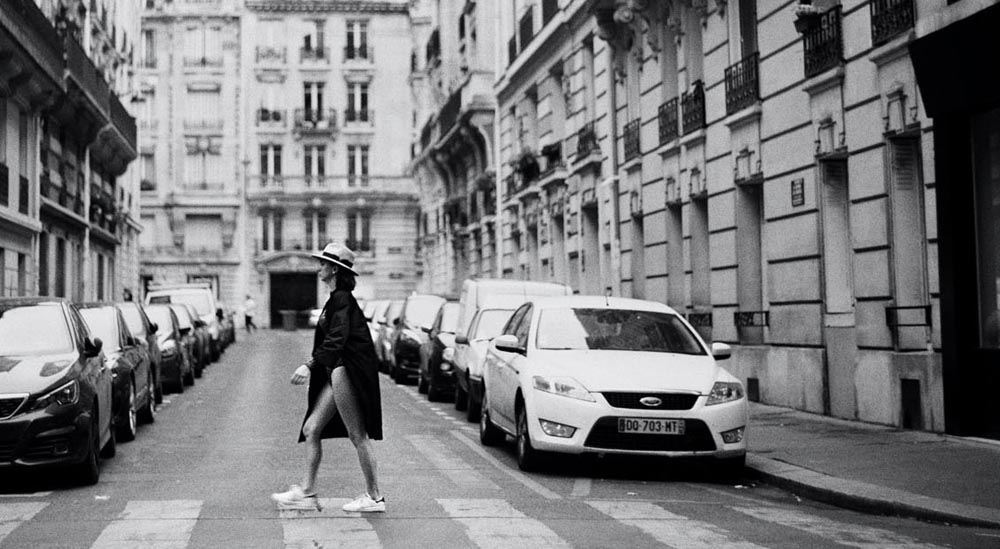With the summer in full swing, NDR is ready to present one of the most eagerly awaited musical events of the season. This highly anticipated show serves not only as a testament to the season’s rich lineup but also as a showcase for the remarkable ascent of Charli XCX. The previous year marked a pivotal moment for Charli, elevating her status with the phenomenal release of “Brat.” Her blend of genius marketing and innovative sound has firmly planted her in the cultural zeitgeist, transforming “Brat summer” into a defining phrase and stretching the boundaries of pop music into an invigorating party landscape.
Arriving at Victoria Park later in the festival day, I was still recovering from a full-on hardcore music experience the day before. Feeling a mix of fatigue and anticipation, I strategically planned to witness Charli’s headline act. Though not entirely familiar with the other performers handpicked by Charli, I was eager to secure the best possible spot for her performance. As I approached the entrance, I took note of the diverse crowd gathering; it was a scene more eclectic than I had anticipated. Beyond the expected legion of teenage and young adult fans, there was a surprising mix of metalheads and general music enthusiasts, all sporting vibrant Brat gear that mirrored the fervour of the younger crowd.
Navigating towards the main stage, I caught the tail end of a set by renowned French music producer and DJ, Gesaffelstein. To say the crowd appeared perplexed would be an understatement. While I usually champion the importance of supporting opening acts, this performance was challenging. By the time the beat had repeated itself for what felt like the thirtieth iteration, I found myself sharing in the crowd’s ambivalence. Gesaffelstein’s music, designed more for immersive vibes than focused listening, seemed at odds with the sunlit setting, a context that dulled the impact of what should have been an astounding light show. The mismatch between atmosphere and audiovisual potential slightly dampened an otherwise electrifying ambience.
Yet, with all of that said, I do see a good amount of applause as his set comes to an end, and after the fact, see quite a bit of praise for the act both online and in person, so maybe my ambivalence was somewhat unwarranted. Still, with the end of that set, I made my way far forward, the crowd already beginning to swell towards the front centre and lock in for a gruelling hour wait for Charli to take to the stage. As I stood, the crowd began to grow in size, soon completely enveloping me with people as far as the eye could see. Now, with the audience being a good portion of teenage girls, it quite handily meant that a lot of them were quite short, meaning even packed in, I still had a fantastic view of the stage.
This stage was soon adorned with the iconic huge Brat flag, a symbol that has practically become inseparable from Charli’s current era. The fabric rippled lightly in the late evening breeze, a giant canvas of neon green that felt both irreverent and profound. Instantly, you could sense a shift within the crowd. Even before Charli appeared, before a single chord hit, the visual itself seemed to ignite people into sudden life. Groups began taking pictures facing backwards with the flag behind them as though it were a pilgrimage site, and genuinely, in that moment, maybe it was. This was not just stage decoration; it was branding turned into ritual.
The closer it got to showtime, the more a discernible hum of anticipation ran through everyone’s bodies. I could feel it, waves of people shuffling, nervously checking their phones, clutching drinks tighter, leaning forward almost without realising. Every single one of us knew something crucial, nearly historic, was going to happen right there. When the house lights finally went out and the crowd was plunged into the dark glow of strobes, the eruption around me was sheer chaos. There was no polite cheering; it was screaming, full-bodied and unfiltered, high-pitched shrills that bordered on cacophony but, in context, felt perfectly correct. The ground beneath us seemed to vibrate less from the speakers and more from the thousands of feet stomping and jumping in unison, as though everyone was trying to shake the stage into existence before Charli could even step onto it.
And then she arrived.
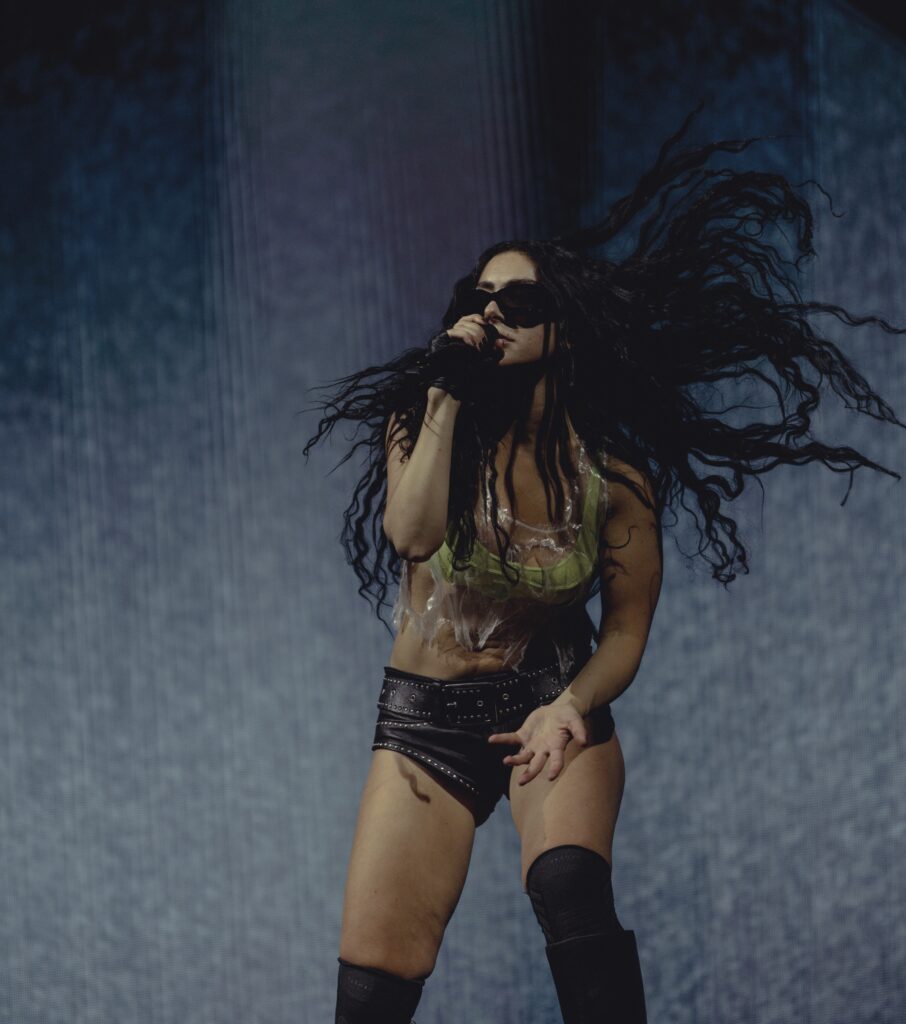
Charli XCX – Henry Redcliffe
No dramatic delay, no overlong intro sequence, Charli marched directly into view with an effortless poise that instantly commanded the full attention of every person in Victoria Park. Her entrance was not overproduced; it did not need to be. She appeared under the glaring green floodlights, sharp bob catching the illumination at every turn, her body language dripping with exactly the kind of casual confidence that she is curating in this “Brat” phase. You could feel her fully leaning into the character she has created, an artist wearing irony, sincerity and mania all at once. As the first beat dropped, she barked into the mic with razor precision, and without hesitation, the entire park shifted into collective hysteria.
From the outset, Charli’s set design worked hand in hand with her music to disarm the expectations of a standard pop headliner. Rather than elaborate choreography or complex pyrotechnics, the emphasis was on energy. A minimal but striking stage layout, Brat visuals projected with harsh, almost abrasive typography, the flat background switching between stark neon greens and searing whites, felt like a sonic pulse had manifested in visual form. It was stripped-down chaos, the aesthetic equivalent of a warehouse rave transplanted outdoors. Watching it, I realised this was not just a gig; it was a reclamation of pop spectacle, a refusal to play safe while still knowing how to command a festival-level crowd.
By the time the first few tracks rolled, I knew we were inside something unique. The crowd was surging with each hard-hitting chorus, people bouncing in rhythms that sometimes had nothing to do with the beat. But that was the beauty of it. Charli’s evolved pop identity thrives less on control than on active derangement, songs that break, morph and tear at pop structures from within. And looking around, I saw young fans locking into that chaos willingly. Teenagers were shrieking choruses into each other’s faces, sweat and mascara already streaking, while further back, twenty-somethings drinking lager were pumping fists in disbelief at how hard every drop landed. Even jaded music lovers, people who came with curious scepticism, were gradually infected by the mania, dragged under Charli’s spell, whether they liked it or not.
Something interesting about the “Brat” era is how well it translates to the live environment. On the record, the songs can sound edgy, angular, sometimes almost alien due to the production’s emphasis on texture. Live, those same songs hit with an entirely different kind of gravity. The bass physically shoves air through your ribs. She bounced across the stage in a way that felt chaotic but never sloppy, hands constantly directing the crowd to respond, to shout, to scream, never allowing even a moment of passive listening.
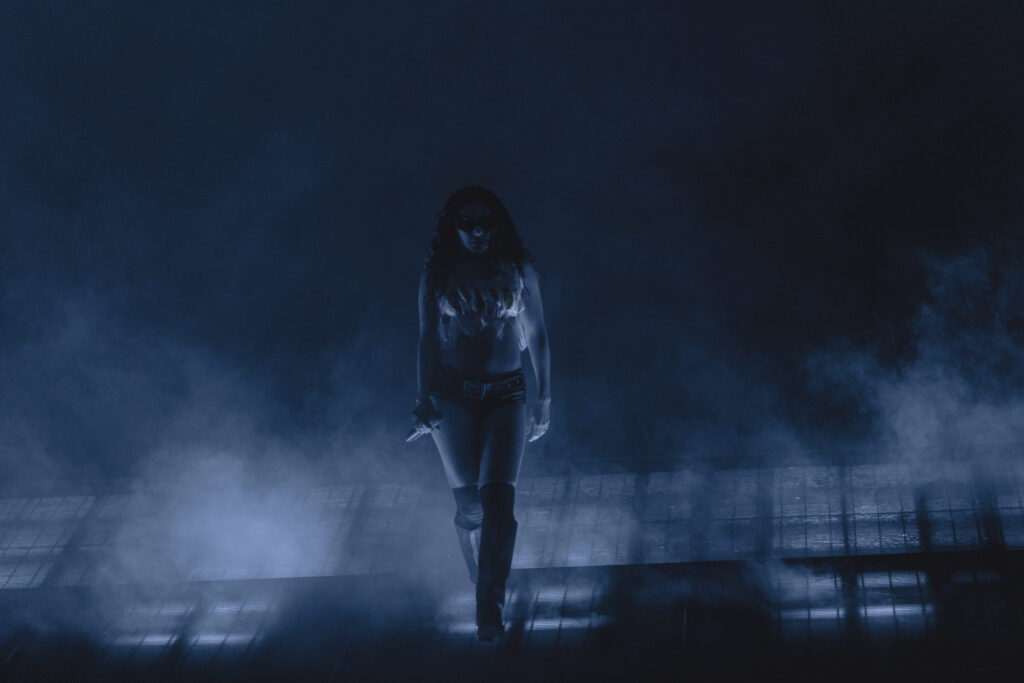
Charli XCX – Henry Redcliffe
Midway through the set, the sun had dipped low enough that the stage lighting took complete control of the park’s atmosphere. What had started as a daytime festival now felt like you had been pulled through a vortex into some other dimension entirely. The skyline of East London, towering apartments just visible in the near distance, looked oddly surreal under the green and black blasts of stage light. I thought about how surreal it must be for longtime fans, people who have followed Charli since her early “True Romance” days, to stand here now, viscerally experiencing this peak. She is not trying to conform to mainstream pop stages anymore. Instead, she is bending the mainstream until it looks like hers.
And as the set powered on, Charli did not waste time trying to weave together a perfect narrative arc. Instead, she embraced chaos, slamming high-energy tracks with barely a break in between. She demanded sweat, and the crowd dutifully delivered. Yet there were small moments of reprieve, odd breaths in between the pounding pace, where she would hold the mic toward the audience, letting the crowd scream lyrics back until her grin broke through under the lights. Those moments were not scripted sentimentality, no fake “best crowd ever” lines, just sly acknowledgement of how powerful the shared energy was.
As we approached the final stretch of her set, I could feel everybody around me vibrating with exhaustion and adrenaline. Phones were held high now not only to capture but just to steady shaking hands. When the closing tracks began to fire, Charli pulled herself taller, her energy intensifying instead of dwindling. She stalked across the stage like it was a boxing ring, snapping her head to the beat, her every move amplified into something larger than life through sheer confidence. When she finally delivered the climactic closing number, the reaction was utterly euphoric. You could feel the release ripple back through the crowd, screams, sobs, laughter, strangers embracing strangers. I even noticed a guy next to me, probably in his late thirties, leather jacket, initially trying to look detached, now absolutely yelling every word with the kind of manic joy people usually try to hide.
As Charli left the stage, the field did not go silent immediately, like at many shows. Instead, an odd afterglow lingered. People stood around, dazed slightly, talking almost nervously, as though they had just witnessed something strange and transformative and did not quite know how to process it. Some fans dropped straight down to the grass, collapsing dramatically, exhausted but giddy. Others stumbled toward friends, recounting favourite moments already, voices cracking from having screamed every lyric. It did not feel like we had just attended a headline set; it felt like we had participated in something more akin to cultural theatre, a communal rewriting of what a pop headliner can be.
Walking out of Victoria Park later, feet blistered, ears still buzzing, I thought about how Charli XCX had succeeded on nearly every possible level. Her “Brat” era has been a cultural commentary wrapped in neon green, at once deeply ironic and completely sincere, and live, she made all of that collapse into something primal. There was no distance, only immersion. You did not just watch Charli; you surrendered. From branding to set design to performance, everything funnelled the audience into one collective scream of existence. Honestly, I cannot remember a pop show that has felt this alive, this unhinged, and this emotionally charged.
And maybe that is the real genius of Charli XCX right now. She is not trying to play into universal appeal or to sand down her edges for larger stages. Instead, she weaponises those edges, amplifies them into a sound and aesthetic that dares you to come closer or stay out of the way. And in a festival environment, where shows can sometimes feel homogenised into predictable arcs, that is revolutionary.
When people talk about iconic festival performances years later, the ones that defined summers, maybe even defined youth eras, it feels inevitable to me that this Victoria Park performance will be mentioned in the same breath. Not because of fireworks or famous guest appearances, but because it was raw, it was unrelenting, it was human chaos. Charli XCX has become the ringleader of a movement, not just of fans but of anyone willing to embrace imperfection and still lose themselves in the moment.
Leaving the grounds, I realised I could not quite categorise what I had seen. It was not conventional pop, nor entirely underground rave; it was not slick spectacle, but it was not amateur. It existed in some rare middle space where authenticity, irony, noise and hooks all merged into one sprawling scream. And that is the point. Charli does not just lead pop music right now, she destabilises it, reshapes it, makes it sharper and stranger and more fun. In my eyes, that is not just good artistry. That is historic artistry.


